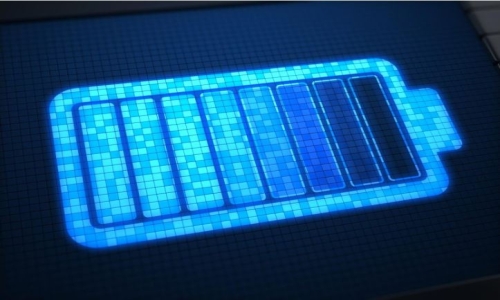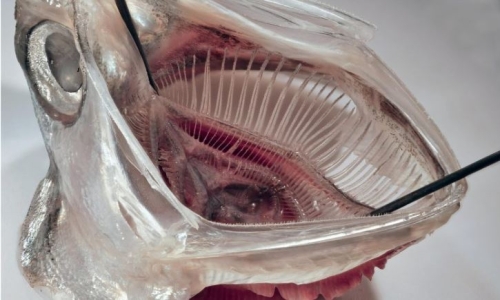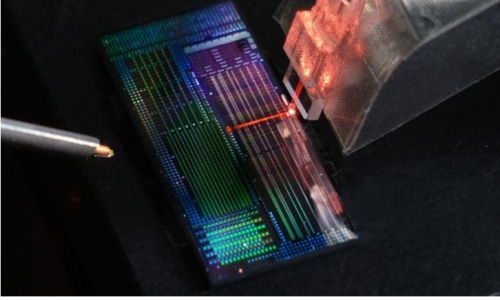


 11:1:2
11:1:2  2025-03-26
2025-03-26  840
840

Imagine never charging your phone again or having a pacemaker that lasts a lifetime. Scientists are developing tiny nuclear batteries powered by radiocarbon, a safe and abundant by-product of nuclear plants.
Unlike lithium-ion batteries, which degrade over time and harm the environment, these new designs use beta radiation to trigger an electron avalanche and generate electricity. The team’s latest prototype vastly improved efficiency, and though challenges remain, the technology could one day make nuclear power as accessible as your pocket device.
The Problem with Current Batteries
Cell phones that die unexpectedly and electric vehicles that can’t make it to their destination highlight a common problem: battery limitations. Most rechargeable lithium-ion (Li-ion) batteries, found in everything from phones to cars, last only hours or days between charges. Over time, their performance declines, requiring more frequent charging.
To address this issue, researchers are exploring a new approach: nuclear batteries powered by radiocarbon. These small, affordable batteries could provide safe, long-lasting energy for decades without needing to be recharged.
Presenting a New Solution
Su-Il In, a professor at the Daegu Gyeongbuk Institute of Science & Technology, will present his team’s findings at the American Chemical Society (ACS) Spring 2025 meeting, taking place March 23-27. The event includes around 12,000 presentations covering a wide range of scientific topics.
Environmental and Technological Limits
Frequent recharging isn’t just inconvenient, it also limits the usefulness of technologies like drones and remote sensors, which rely on stable, long-term power. Li-ion batteries come with environmental downsides too: lithium mining is energy-intensive, and improper disposal can harm ecosystems. As our world becomes more connected and data-driven, the need for more durable, sustainable battery solutions is growing.
And better Li-ion batteries are likely not the answer to this challenge. “The performance of Li-ion batteries is almost saturated,” says In, who researches future energy technologies. So, In and his team members are developing nuclear batteries as an alternative to lithium.
How Nuclear Batteries Work
Nuclear batteries generate power by harnessing high-energy particles emitted by radioactive materials. Not all radioactive elements emit radiation that’s damaging to living organisms, and some radiation can be blocked by certain materials. For example, beta particles (also known as beta rays) can be shielded with a thin sheet of aluminum, making betavoltaics a potentially safe choice for nuclear batteries.
The researchers produced a prototype betavoltaic battery with carbon-14, an unstable and radioactive form of carbon, called radiocarbon. “I decided to use a radioactive isotope of carbon because it generates only beta rays,” says In. Moreover, a by-product of nuclear power plants, radiocarbon is inexpensive, readily available, and easy to recycle. And because radiocarbon degrades very slowly, a radiocarbon-powered battery could theoretically last for millennia.
Building a Better Betavoltaic
In a typical betavoltaic battery, electrons strike a semiconductor, which results in the production of electricity. Semiconductors are a critical component in betavoltaic batteries, as they are primarily responsible for energy conversion. Consequently, scientists are exploring advanced semiconductor materials to achieve a higher energy conversion efficiency — a measure of how effectively a battery can convert electrons into usable electricity.
To significantly improve the energy conversion efficiency of their new design, In and the team used a titanium dioxide-based semiconductor, a material commonly used in solar cells, sensitized with a ruthenium-based dye. They strengthened the bond between the titanium dioxide and the dye with a citric acid treatment. When beta rays from radiocarbon collide with the treated ruthenium-based dye, a cascade of electron transfer reactions, called an electron avalanche, occurs. Then the avalanche travels through the dye and the titanium dioxide effectively collects the generated electrons.
Dual-Electrode Innovation
The new battery also has radiocarbon in the dye-sensitized anode and a cathode. By treating both electrodes with the radioactive isotope, the researchers increased the amount of beta rays generated and reduced distance-related beta-radiation energy loss between the two structures.
During demonstrations of the prototype battery, the researchers found that beta rays released from radiocarbon on both electrodes triggered the ruthenium-based dye on the anode to generate an electron avalanche that was collected by the titanium dioxide layer and passed through an external circuit resulting in usable electricity. Compared to a previous design with radiocarbon on only the cathode, the researchers’ battery with radiocarbon in the cathode and anode had a much higher energy conversion efficiency, going from 0.48% to 2.86%.
Long-Term Potential and Applications
These long-lasting nuclear batteries could enable many applications, says In. For example, a pacemaker would last a person’s lifetime, eliminating the need for surgical replacements.
However, this betavoltaic design converted only a tiny fraction of radioactive decay into electric energy, leading to lower performance compared to conventional Li-ion batteries. In suggests that further efforts to optimize the shape of the beta-ray emitter and develop more efficient beta-ray absorbers could enhance the battery’s performance and increase power generation.
Rethinking Nuclear Energy
As climate concerns grow, public perception of nuclear energy is changing. But it’s still thought of as energy only produced at a large power plant in a remote location. With these dual-site-source dye-sensitized betavoltaic cell batteries, In says, “We can put safe nuclear energy into devices the size of a finger.”
Reality Of Islam |
|

A new study

Researchers

A new chip-

A large inf
 9:3:43
9:3:43
 2018-11-05
2018-11-05
10 benefits of Marriage in Islam
 7:5:22
7:5:22
 2019-04-08
2019-04-08
benefits of reciting surat yunus, hud &
 9:45:7
9:45:7
 2018-12-24
2018-12-24
advantages & disadvantages of divorce
 11:35:12
11:35:12
 2018-06-10
2018-06-10
 6:0:51
6:0:51
 2018-10-16
2018-10-16
 8:15:37
8:15:37
 2023-02-16
2023-02-16
 8:25:12
8:25:12
 2022-03-09
2022-03-09
 11:2:27
11:2:27
 2022-10-06
2022-10-06
 9:50:37
9:50:37
 2023-02-28
2023-02-28
 8:4:21
8:4:21
 2022-01-08
2022-01-08
 8:21:9
8:21:9
 2018-06-21
2018-06-21
 6:14:3
6:14:3
 2023-01-18
2023-01-18
 5:41:46
5:41:46
 2023-03-18
2023-03-18
| LATEST |